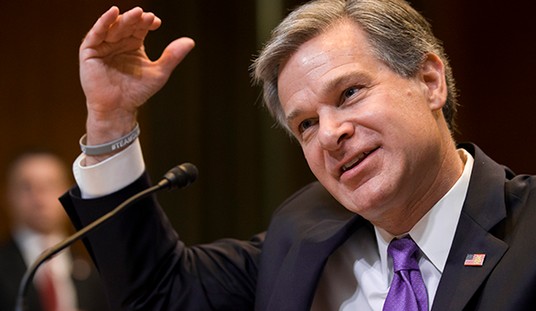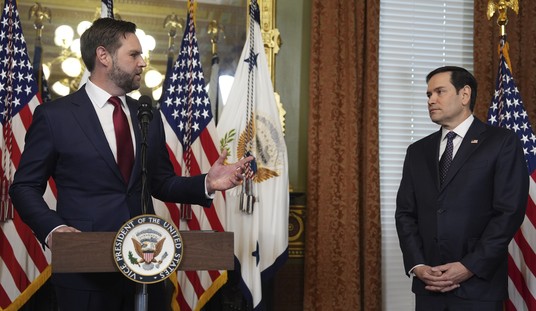Fair question. The single biggest criticism of the agency after the new recommendations were published yesterday had to do with this very subject. The rule laid down by the CDC was that vaccinated people should take off their masks and gather indoors only with small groups of other immunized people — with one exception. That exception was for “low-risk” unvaccinated people in a single household, whom the vaccinated are also encouraged to socialize with. Obviously, that was added to the guidance to reassure grandparents that it’s okay to see their grandchildren again even if the latter haven’t gotten their shots and won’t for many more months.
But … what if your grandkids live in another city? It may be months before we reach a degree of herd immunity sufficient to make air travel completely safe again.
The airline industry is understandably eager to get its revenue stream flowing after a tremendously difficult year so they’re demanding answers. If vaccinated people are protected from illness and are much less likely to transmit the virus than unvaccinated people are, as scientists suspect, then why not advise them to take to the skies?
In a new statement, industry group Airlines For America insists being on board a plane poses a low risk of coronavirus infection because of heavily filtered air and federally mandated mask wearing. “We remain confident that this layered approach significantly reduces risk,” the group said…
“Every time there’s a surge in travel, we have a surge in cases in this country,” said CDC Director Dr. Rochelle Walensky during Monday’s White House coronavirus response briefing.
As the CDC worked to prepare guidance for people who are fully vaccinated against Covid-19, the possibility of changing travel recommendations was discussed but there was never a lot of momentum behind adjusting it right now, two federal health officials familiar with the discussion tell CNN.
What does “momentum” mean there, exactly? If the CDC’s guidance is based on science, there should be no such thing as “momentum.” Either it’s safe for vaccinated people to fly based on what we know about transmission or it isn’t. And if it’s debatable, why not err on the side of encouraging travel in order to give vaccine skeptics a stronger incentive to get their shots?
In the abstract, flying seems like it should be a high-risk environment. You’re packed in tight into a small tube; germs are going to spread and they don’t have far to travel to reach everyone onboard. In reality, flying appears to be a low-risk environment. A CNN piece from last August explained why:
One explanation for the apparently low risk level is that the air in modern aircraft cabins is replaced with new fresh air every two to three minutes, and most planes are fitted with air filters designed to trap 99.99% of particles.
Meanwhile, various new protocols have been implemented, such as face-coverings for both passengers and crew, which is mandatory on most airlines, temperature screenings, as well as more intensive cabin cleaning and limited movement in the cabin during flight.
One estimate at the time placed the risk of getting infected on a full flight at one in 4,300, or one in 7,700 if the middle seat next to you was empty. No doubt those odds change depending upon how prevalent the virus is in the population at a given moment, but masks and filtration are doing a lot to reduce risk. A study last year that looked at five flights from Dubai to Hong Kong discovered that a total of 58 passengers tested positive upon arrival — but no one else on the planes, a group of 1,500-2,000 people, tested positive afterward, presumably indicating no in-flight transmissions. On another flight, 27 people tested positive after landing(!) yet only two in-flight transmissions were detected in the subsequent days. A third analysis published in October argued that the risk of getting infected on a plane is lower than the risk inside “an office building, classroom, supermarket, or commuter train,” with the author later asserting that he knew of 60 confirmed in-flight transmissions during the pandemic despite more than a billion people traveling by air.
If it’s safe for vaccinated people to go grocery shopping, especially if they’re masked up, it should be safe for them to fly to see their grandkids. And domestic travel should be especially safe relative to international travel since the time spent in the air is typically much shorter. Unless you’re flying coast to coast, you’re apt to be in the cabin no more than two or three hours.
The sharpest critic in media today of the continued ban on travel for the vaccinated is Dr. Leana Wen, whom I highlighted yesterday. She has an op-ed out today that makes a trenchant point about the CDC’s double standards. If vaccinated people no longer need to quarantine after having close contact with someone who’s infected, as the CDC has said, why shouldn’t they be free to fly? If the CDC is worried about them potentially transmitting the virus to someone who’s unvaccinated then they should be asked to isolate after being exposed to someone who’s infected. If they CDC *isn’t* worried about them transmitting the virus then there’s no reason not to let them travel. More:
In fact, I think it could go further and encourage those fully vaccinated to travel. The CDC can specify that they should still be careful once they get to their destination. Don’t go to parties with people of unknown vaccination status, for example, but it’s fine to visit extended family, go to beaches and parks and tour cultural sites (while wearing masks in public places).
How about other social spaces? As is the case for most public-health decisions, there isn’t a one-size-fits-all solution. The CDC can provide nuance and risk estimates instead of taking an absolutist approach. Let’s say it’s really important for an elderly, vaccinated person to resume in-person church services. I think that person can and should go because the risk of infection is exceedingly low compared with the benefit to their mental and spiritual health. Another person might be desperate to go to a restaurant, hair salon or the gym. Vaccination means that they should regain these freedoms — with caution, including masking and physical distancing when possible. Health-care providers need to help people exercise good judgment while considering each person’s individual values, or else we lose their trust.
Wen’s top priority is incentivizing people to get their shots early because she knows there’s a hard 25 percent or so the population that’s holding out and won’t be easy to entice once society fully reopens, as it hopefully will this summer. Once that happens, the incentive is gone: The unvaccinated will take full advantage of restrictions being lifted even though they’re still at risk. The way to possibly move some of them off the fence and into the pro-vax camp now is to encourage vaccinated people to start socializing again as soon as possible, hoping that skeptics won’t want to wait six months or whatever for everything to reopen. Then again, how many hardcore skeptics are actually waiting around for that? They’re already socializing aggressively regardless of what any egghead doctor thinks, no? Here’s Wen making the case yesterday for the CDC to lighten up.








Join the conversation as a VIP Member